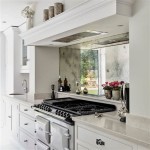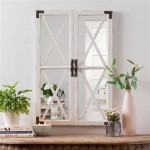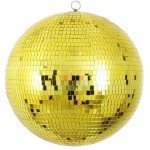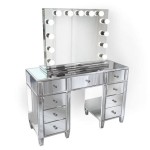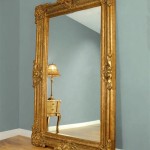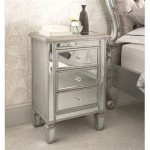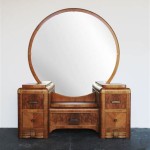DIY Bathroom Mirror Storage Cabinet
Bathroom storage is a common challenge, particularly in smaller spaces. A DIY bathroom mirror storage cabinet offers a clever solution, combining the functionality of a mirror with the practicality of hidden storage. This project can be customized to fit individual needs and bathroom aesthetics, providing a personalized storage solution.
Several factors should be considered before starting this project. Accurate measurements of the available wall space are crucial. The depth of the cabinet should be sufficient to hold toiletries and other bathroom essentials without protruding excessively into the room. Selecting materials that are resistant to moisture and humidity is essential for longevity. Common choices include plywood, medium-density fiberboard (MDF), and treated lumber. Mirror options range from standard glass mirrors to mirrored acrylic sheets, each offering different properties in terms of weight, durability, and cost.
Gathering the necessary tools simplifies the building process. Essential tools include a measuring tape, a saw (circular saw, jigsaw, or handsaw), a drill with various drill bits, a screwdriver, safety glasses, and work gloves. Wood glue, wood screws, and finishing nails will be needed for assembly. Other supplies may include hinges, door handles or knobs, paint or stain, and a paintbrush or roller.
The first step in constructing the cabinet is to cut the chosen material to the determined dimensions. This includes the top, bottom, sides, and shelves of the cabinet box. Precise cutting ensures a square and stable structure. After cutting, the pieces can be assembled using wood glue and screws. Pilot holes should be drilled before screwing to prevent the wood from splitting. Clamps can be used to hold the pieces together while the glue dries.
Once the cabinet box is assembled, the next step involves attaching the back panel. This panel can be made from a thinner material, such as plywood or hardboard. It provides structural support and helps to keep dust and moisture out of the cabinet. The back panel can be attached using nails or staples.
Next, the shelves can be installed. Their placement depends on the desired storage configuration. They can be attached using shelf supports, glue, or screws. Adjustable shelf supports offer flexibility for accommodating items of varying heights.
Attaching the mirror to the front of the cabinet is a critical step. Mirror adhesive or clips designed specifically for mirrors are recommended for secure attachment. Ensure the mirror is centered and level before securing it. If using a framed mirror, the frame can be attached directly to the cabinet box.
The next stage involves installing the door(s). Depending on the design, the cabinet may have one or two doors. Hinges are used to attach the doors to the cabinet box. Ensure the doors are aligned correctly and open and close smoothly. Handles or knobs can then be attached to the doors.
Finishing the cabinet adds a polished look and protects the materials from moisture. Painting or staining is the most common method. Several coats may be required for optimal coverage and durability. Allow sufficient drying time between coats. A sealant can be applied after painting or staining for added protection against moisture.
Mounting the finished cabinet requires careful planning. Wall studs provide the most secure anchoring points. A stud finder can be used to locate the studs. Heavy-duty screws should be used to attach the cabinet securely to the wall. If mounting to drywall without studs, appropriate wall anchors are essential to prevent the cabinet from pulling away from the wall.
Alternative design options offer customization possibilities. Incorporating lighting into the cabinet, either above the mirror or inside, adds functionality and enhances the bathroom's ambiance. Adding electrical outlets inside the cabinet can be useful for powering electric toothbrushes or other devices. Consider using frosted or patterned glass for the doors for a decorative touch.
Regular maintenance helps to preserve the cabinet's appearance and functionality. Cleaning the mirror and cabinet surfaces with appropriate cleaning solutions prevents the buildup of grime and water spots. Inspecting the hinges and door hardware periodically and tightening loose screws ensures the cabinet remains securely attached and operates smoothly. Addressing any signs of moisture damage promptly prevents further deterioration.
Building a DIY bathroom mirror storage cabinet offers a practical and personalized storage solution. By following these steps and considering individual needs and design preferences, a functional and aesthetically pleasing addition to the bathroom can be created.

Diy Bathroom Mirror Storage Case Shanty 2 Chic

Diy Bathroom Mirror Storage Case Shanty 2 Chic

Great Mirror Storage Ideas The Owner Builder Network Small Space Bathroom Diy Bedroom For Bedrooms

Diy Bathroom Mirror Storage Case Shanty 2 Chic

Diy Bathroom Cabinet Liz Marie Blog

Diy Bathroom Mirror Storage Case Shanty 2 Chic

Diy Bathroom Storage Cabinet Jaime Costiglio

Diy Medicine Cabinet At Home With Ashley

Bathroom Mirror With Storage Free Woodworking Plan Com

Taimei Diy Wall Frameless Mirror Medicine Cabinet 15 Wx36 Hx4 5 8 D With Beveled Edges Color Satin Bathroom 3 Adjustable Glass Shelves Storage By Foca Us Com

